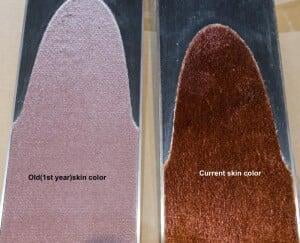The Hoks do not need a lot of maintenance. We recommend making sure the bindings screws are tight (if they loosen, put some blue locktite in the inserts). If the bases start to look dried out you can rub xc paste wax or hard (glide) wax on them. Silicone spray, xc paste waxes, or skin waxes can be rubbed on the skin part of the base. When not in use, keep in a dry place (do not leave them sticking in the snow – especially wet snow – all winter. Clean off excess snow after use, especially in the binding, so it does not freeze in place.
The tail design on the Hok is from a felt rug I purchased in the Altai Mountains on one of my early trips there. This is a classic nomadic design from the area and the felt rugs are common there, used on sleeping platforms, yurt floors, and the beds of the horse drawn sleds called ‘Chanas’
The Hoks are made in a small factory a few hours south of Shanghai, China. The factory has about 40 employees and makes skis and snowboards exclusively.
Since the advent of modern Ptex based skis, rocks have been the scourge of all ski bases, with some bases being more prone to damage(fishscale bases in particular) then others. The skin part of the base on the Hoks can also be damaged by rocks, gravel and sand. Avoid these when you can, but it is possible to cross bare spots and rocky gravelly areas if one is careful. Rule #1 is never slide on rocks, gravel, sand, or hard woody debris. Always step lightly when crossing any of these and the Hoks will be fine. We ski early and late season a lot on the Hoks and so encounter poorly covered or melted out areas often and the ‘step lightly’ technique has worked well in all our “testing”.
Yes, as long as it is not from our first year Hoks, You can contact us for replacement, and we have also have a few replacement inserts with a peel and stick glue on the back. This requires a bit more work on your part, but if you are reasonably DIY proficient it is doable at home.

Skin colors by years.





